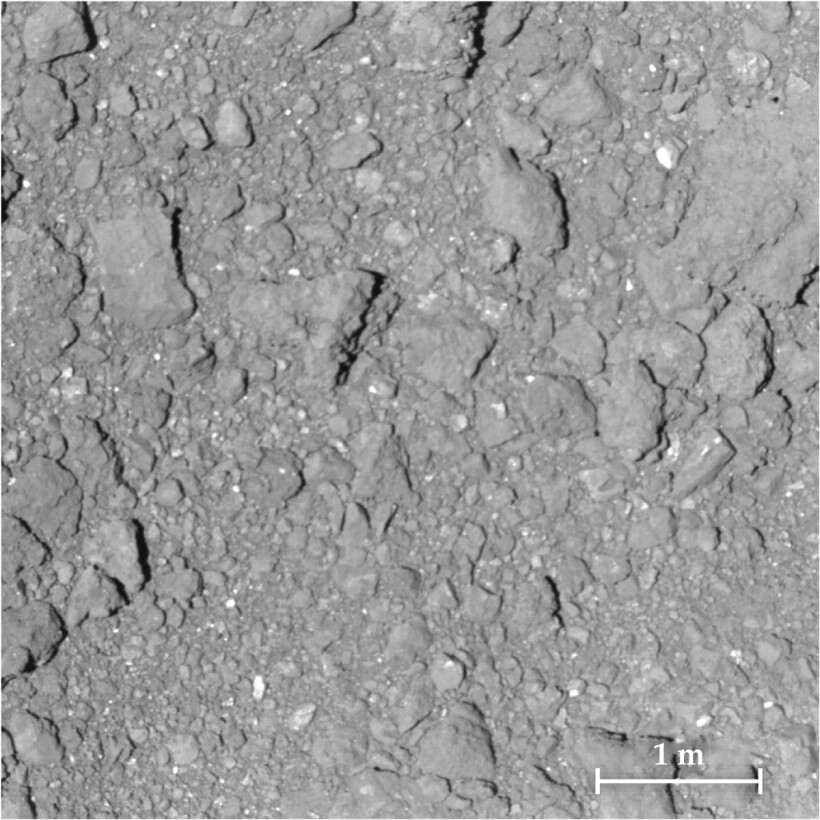Lutetium and hafnium tell the story of liquid water on asteroid Ryugu
DOI: 10.1063/pt.uwpi.wwhq

The surface of the Ryugu asteroid was photographed from an altitude of 42 m on 15 October 2018 by a camera on the Hayabusa2 spacecraft. (Photo by JAXA, University of Aizu, and collaborators.)
Shortly after the coalescence of the solar system 4.6 billion years ago, the parent body of the near-Earth asteroid 162173 Ryugu had liquid water. At that time, the parent body was in the solar system’s outer region, where water is frozen. But for the first 7 million years of the parent body’s existence, limited radioactive decay provided enough heat to melt the ice and make liquid water. Some time later, an asteroid smashed into the parent body, and Ryugu formed from the impact fragments. Today, Ryugu has almost no water—and how water left the asteroid and when is uncertain.
To study the long-term fate of water in Ryugu, the Hayabusa2 mission, organized by the Japan Aerospace Exploration Agency, rendezvoused with the asteroid in June 2018. Then, automated instruments on the spacecraft scooped up samples from the asteroid, made various measurements, and arrived back to Earth in December 2020. Now the University of Tokyo’s Tsuyoshi Iizuka and colleagues have presented isotope data from Ryugu samples that suggest water could have stuck around as ice for roughly a billion years before an impact fractured the asteroid and caused the ice to melt, mobilize, and escape to space.
The researchers used mass spectrometry to measure the isotopic abundances of samples that contained the rare-earth element lutetium and the transition metal hafnium. The isotopes 176Lu and 176Hf can be used as a geological chronometer. In the asteroid, 176Lu and some 176Hf were found in apatite minerals, and the researchers saw that the minerals’ grain boundaries were partially dissolved. Isotope results showed a 176Lu deficit relative to 176Hf, which is consistent with fluid reactions that would leave relatively insoluble 176Hf behind. Together, those clues led the team to suspect that ice melted and water carried Lu to the parent body’s surface after it was struck by the asteroid that likely formed Ryugu.
According to the researchers’ calculations of Lu’s starting abundance and rate of loss, the water refroze after radioactive decay dissipated and remained as ice for the next billion years. Then, the asteroid impact could have generated enough heat to melt the ice, and the ensuing fractures would have allowed the fluid, with the dissolved Lu from apatite minerals, to flow predominantly from the inner region of the Ryugu parent body to its surface. As the asteroid’s orbit drifted closer to the Sun, solar energy enhanced water degassing and ice sublimation, which would explain the lack of water in Ryugu that’s observed today. (T. Iizuka et al., Nature 646, 62, 2025
More about the Authors
Alex Lopatka. alopatka@aip.org

